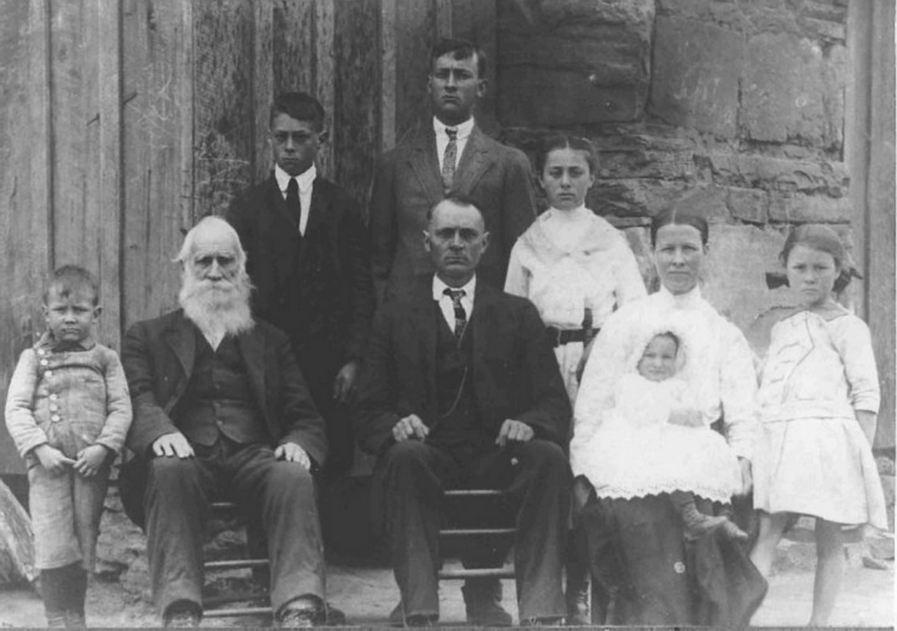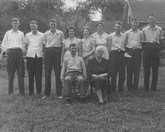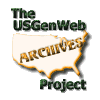| |
English Chapel
Transylvania Tour Stop February 2003 - Brevard Township, Transylvania County,
North Carolina
History Essay by Linda Hoxit Raxter, M. A., American History
Note: Transylvania Genweb is not affiliated with or have
contact information for this facility.
 Print This Page Print This Page
|
|
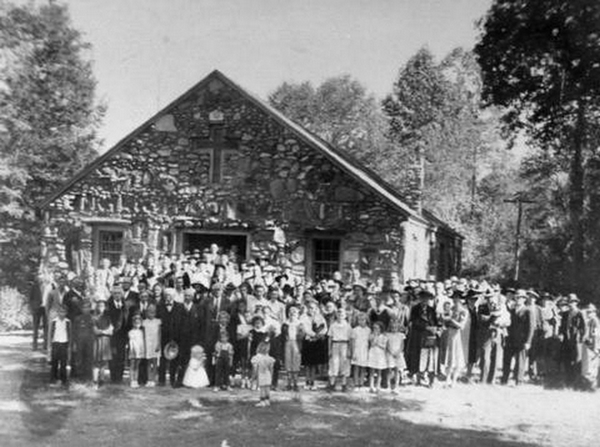
English Chapel dedication in 1940

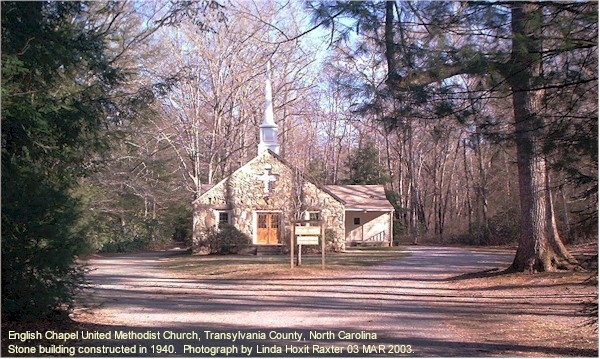
|
|
Methodism grew deep roots in what would become Transylvania County, North Carolina long before
the 1830 birth of Alexander Fletcher English in present day Mitchell County, North Carolina.
Bishop Francis Asbury braved frontier mountains and debilitating rheumatoid arthritis to include
the settlers around Davidson River in his ministry at the beginning of the nineteenth
century. As A. F. English grew toward manhood, a thriving Methodist congregation emerged
along the East Fork of the French Broad River by the early 1840s, sharing a meeting place with the
neighboring Baptists. These are just two examples of the foundation of Methodism that existed
far from the camp meeting A. F. English attended at Hunter's Chapel in Virginia where he became a
member of the denomination. He later pursued the ministry and was admitted to the Holston
Conference of the Methodist Episcopal Church in 1855. He became a Circuit Rider minister
beginning in Virginia and later served the Sulphur Springs and Waynesville circuits before his
ministry brought him to Davidson River.
The name Strawbridge is a tribute to Methodist Missionary Robert Strawbridge and is found
frequently among members of the Young family, including the Strawbridge Young who settled with his
family at Davidson River. Here, Rev. A. F. English married daughter Naomi Malina Young in
1859 and settled to raise a family of his own. His ministry continued as he helped establish
both Oak Grove Methodist Church for the nearby emerging community of Brevard, and what is now
called English Chapel Methodist Church near Davidson River in 1860. Built on property owned
by Strawbridge Young, the original English Chapel was made from lumber sawed at a mill owned by
Rev. English on nearby Avery's Creek.
English Chapel was also known as both Young's Chapel and Union Chapel. This latter name
reflects the uncertain times in which it was established. As the antebellum period progressed
towards the eventual secession of the Southern States, various religious denominations were
likewise divided alongside national issues. As the Methodists became increasingly
abolitionist in national policies, this division came in the creation of the Methodist Episcopal
Church South. However, Rev. A. F. English remained with the national body of the
Methodist Episcopal Church. Granddaughter Katherine English Anderson later wrote of the
stories she had heard of her grandfather's Union sympathies, "At the outbreak of hostilities
between the North and South, he remained a firm defender of the government under which he
lived. Although he took no active part in the war, he was known to give aid to the enemies of
the Confederacy, and his life was threatened many times."
Strawbridge Young waited until the end of the Civil War before he formally donated the land to
the small congregation. Even in this 1867 transaction, the restrictions of the deed reflected
continuing uncertain times. Young stressed that the church was to remain with the national
Methodist Conference. In addition, he emphasized that the deed was to continue under the laws
of the United States of America, a reference usually considered unnecessary even in legal
terms. Transylvania County had experienced divided allegiances throughout the Civil War, and
this early history of English Chapel reflects these localized tensions. Demonstrating the
complexities of the many issues and considerations local residents faced, it is interesting to note
that Strawbridge Young was not only a Union sympathizer but also a slave owner.
Alongside an interest in providing a place for public worship, Strawbridge Young also included
allowance in the deed for the property to be used as a school. In the 1830 census, the
listing for Strawbridge Young included the infrequently used employment category of an educated
professional. Likewise, A. F. English obtained considerable education in his preparation for
the ministry. This emphasis on education at English Chapel meant a highly successful school
served the small Davidson River community and continued to create leaders in the development of
Transylvania County as a whole. In the next generation, alumni of the small one room
schoolhouse included Daniel Leon English who became a noted attorney and judge and his brother
Edwin Strawbridge Young who became a beloved physician. The tradition continued beyond the
Davidson River community as Dr. English's daughter, Katherine English Anderson, went on to serve 11
years on the Brevard City Council before becoming the town's mayor.
Long after Rev. A. F. English died in 1896 from Typhoid Fever, English Chapel continued to adapt
to the changes that Transylvania County faced during the twentieth century. In the
development of his nearly 100,000 acre Pisgah Forest, George Vanderbilt aggressively obtained the
majority of small farms and other property within the larger boundary. A 1905 report by Carl
Alwin Schenck concerning the commercial development potential of the property suggests that
Vanderbilt even claimed English Chapel as part of his own holdings since a small school valued at
$50 was listed among Vanderbilt property in the Lower Davidson River alongside the English
place.
Despite this, the small chapel and school did maintain its autonomy. After serving years
as a small community school, the pattern of consolidation of county schools eventually moved the
students to larger schools as the community itself moved from the Vanderbilt development that
later became the core of Pisgah National Forest, engulfing the small chapel. English Chapel
continued its ministry within the National Forest, and the original wooden chapel was replaced in
1940 with a larger structure built from stones gathered in the nearby Davidson River. In what
was heralded as a "return to tradition" by pastor Chris Fitzgerald, a small Christian school began
operating at the chapel in 1980.
English Chapel continues its ministry every Sunday morning with 9:00 services. Now located
near Davidson River Campground in Pisgah National Forest, the congregation welcomes visiting
campers and all others seeking Christian fellowship alongside Davidson River.
-
- - Linda Hoxit Raxter, originally posted March 12, 2003
- Thanks to Linda O. Anders for her assistance in locating source materials
for this essay.
|
|
 ^ Back to Top ^ Back to Top
Primary Resources:
Asbury, Francis, The Journal of the Rev. Francis Asbury Bishop
of the Methodist Episcopal Church From August 7, 1771 to December 7, 1815, Vol. III,
November 8, 1800 to December 7, 1815 New York: Methodist Episcopal Church, 1821), pp 81-83,
120.
East Fork Baptist Church Minutes, microfilm copy available at the
Transylvania County Library. [Contains many references to the members and activities of
the East Fork Methodist Congregation - LHR}
Fitzgerald, Chris, "Returning to Tradition: English Chapel
School," Transylvania Times, 18 AUG 1980.
Schenck, Carl Alwin, "Report on Resources Available within the
Confines of Pisgah Forest, The Property of George W. Vanderbilt," Carl Alwin Schenck
Collection, North Carolina State University Special Collections.
Strawbridge
Young to Trustees Methodist Episcopal Church (12 MAY 1867), Transylvania County Registrar
of Deeds Office, Transylvania County Deed Registry, Book 1, pp 317-318
 ^ Back to Top ^ Back to Top
|
Secondary Resources:
Anderson, Katherine English," Rev.
Alexander Fletcher English, 1830-1896," Transylvania County Heritage Book Committee. The Heritage of Transylvania County, North Carolina,
1995. Waynesville, NC: Don Mills, Inc., 1995,
90.
McCrary, Mary Jane, "The English
Family," The Transylvania
Times, 92, no. 72, (28 SEP 1978).[Based largely
on the obituary of A. F. English from the August 1896 Sylvan Valley News. -
LHR]
McCrary, Mary Jane.
"Pioneer Preachers," chapter in Transylvania
Beginnings: A History. Easley, SC: Southern Historical
Press, 1984, 68-82.
Price, R. N.
Holston Methodism: From Its Origin to the Present
Time. Vol. IV. 1844-1870 . Nashville, TN: Methodist
Episcopal Church South, 1912, pp 191, 267.
^ Back to Top
|
|
|
